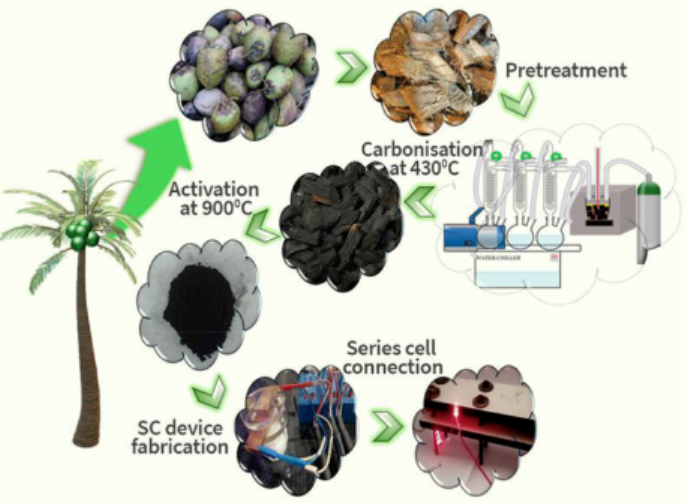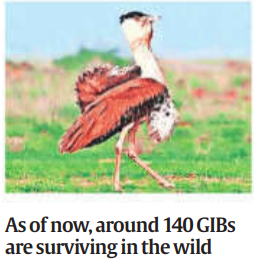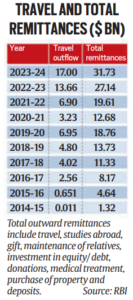1 July 2024 : Daily Current Affairs
1. Should education be brought back to the State list?
(Source – The Hindu, International Edition – Page No. – 10)
| Topic: GS2 – Social Justice – Education |
| Context |
|
Historical Background
- The Government of India Act, 1935 introduced a federal structure, assigning education to provincial control.
- Post-independence, education remained in the State list of powers, allowing states autonomy over educational policies.
- During the Emergency, the Swaran Singh Committee recommended shifting education to the concurrent list to enable national policies.
- The 42nd Constitutional Amendment Act (1976) implemented this shift, controversially ratified without extensive debate.
- The 44th Constitutional Amendment Act (1978) attempted to reverse the 42nd amendment but was not passed in the Rajya Sabha.

International Practices on Education Governance
- United States: Education standards and tests are set by state and local governments; federal role focuses on financial aid and policy guidance.
- Canada: Education is entirely managed by provincial governments.
- Germany: Education legislative powers lie with the ‘landers’ (states).
- South Africa: National departments oversee education policy, while provinces implement and address local issues.
Challenges and Controversies with Centralised Education Policy
- Recent Issues with NEET and UGC-NET:
- NEET-UG has faced controversies over grace marks, alleged paper leaks, and irregularities.
- UGC-NET was cancelled post-exam, while NEET-PG exams were postponed.
Arguments for Concurrent List Inclusion
- Uniformity and Synergy: Allows for national education policies and standards across states.
- Improved Coordination: Ensures consistency and collaboration between central and state authorities.
- Financial Contribution: While states spend the majority (85%), central funds (15%) contribute to overall education expenditure.
Arguments for State List Restoration
- Autonomy and Local Adaptation: States can tailor education policies to suit local needs and diversity.
- Corruption and Accountability: Centralisation does not guarantee mitigation of issues like corruption and lack of professionalism.
- Recent Challenges: Issues with NEET highlight potential pitfalls of centralised control in sensitive areas like professional courses.
Way Forward
- Productive Dialogue: Need for constructive discussions to reconsider placing education back in the State list.
- Tailored Policies: States should have autonomy in framing syllabi, conducting tests, and managing admissions.
- Continued Central Role: Regulatory bodies like National Medical Commission and UGC can oversee standards while respecting state autonomy.
This approach aims to balance national educational goals with local autonomy, ensuring effective governance and improved educational outcomes across India.
| Practice Question: Discuss the historical evolution of the governance of education in India post-independence, particularly focusing on the placement of ‘education’ in the concurrent list through constitutional amendments. (150 Words /10 marks) |
2. Carbon derived from coconut husks can power supercapacitors, find researchers
(Source – The Hindu, International Edition – Page No. – 3)
| Topic: GS3 – Science and Technology |
| Context |
|

Schematic illustration of the synthesis of activated carbon.
Analysis of the news:
- Researchers at Government College for Women, Thiruvananthapuram, developed a method to produce activated carbon from coconut husks.
- Coconut husks, a major agricultural residue in Kerala, provide a sustainable and cost-effective source for activated carbon.
- The activated carbon from coconut husks is suitable for fabricating supercapacitors, offering a green solution for high-performance energy storage.
- Supercapacitors are essential for sustainable energy storage due to their higher capacitance and energy storage capacity compared to conventional capacitors.
- Finding the ideal electrode material for supercapacitors has been challenging.
- The findings were published in the American Sustainable Resource Management Journal.
- The team used a microwave-assisted method developed at the Centralised Common Instrumentation Facility (CCIF) at the college.
| What Are Supercapacitors? |
|
| Practice Question: Discuss the potential and limitations of supercapacitors as energy storage solutions in the context of sustainable development. (150 Words /10 marks) |
3. Govt approves 56 crore for next phase of conservation plan for Great Indian Bustard
(Source: Indian Express; Page No. 12)
| Topic: GS3 – Environment |
| Context: |
|
Analysis of News:

Conservation Plan:
- In March, the Wildlife Institute of India (WII) submitted a proposal that outlines the plan to scale up the projects for 2024-2033.
- The conservation plan includes in-situ conservation, habitat development, completion of the conservation breeding centre, releasing captive-bred birds and habitat development, among other things. The plan consists of two components;
- First Component: it will consist of the target such as completion of the conservation breeding centre (CBC), in Jaisalmer’s Ramdevra, development of the sorsan Lesser Florican facility, preparatory work for releasing captive-bred birds, the release of GIBs in Rajasthan and other range states, post release monitoring and artificial insemination.
- Second Components: it will consist ofin-situ conservation of GIBS in other range states such as Gujarat, Maharashtra, Karnataka, Andhra Pradesh and Madhya Pradesh. It will be implemented by the Wildlife Institutes of India along with the state governments.
- Between 2024-2026, WII will also undertake GIB population estimation in Jaisalmer, its range states, and a range-wide population estimation of the lesser Floricans.
- The 2024-2029 phase will also target the development and implementation of artificial insemination techniques as a backup to the captive breeding conservation scientists working on the projects. The WII has been collaborating with the Abu Dhabi based international fund for Houbara conservation for the same.
Reasons for Population decline:
- These species have faced severe decline over the years due to hunting, habitat loss and depredation of eggs by other predators.
- In addition, the overhead power lines have also emerged as key threats to GIB with a 2017-18 study estimating deaths of 88000 birds of different species annually.
| Key Steps taken by the Ministry of Environment, Forest and Climate Change |
|
PRELIMS FACTS
1. Gen Upendra Dwivedi takes charge as 30th army chief
(Source: Indian Express; Page: 09)
| Context: |
|
About Gen Upendra Dwivedi:
- The Gen Upendra Dwivedi belongs to the Jammu and Kashmir Rifles and was Vice Chief of Army Staff from February this year.
- In his past appointments, he had played a vital role in grey zone warfare in the context of national security.
- He commanded his battalion in active counter-terrorism operations in the Kashmir Valley and in the Rajasthan Desert.
- He has been Inspector General Assam Rifles as Major General and Sector commander as Brigadier.
- He was also involved in modernising and equipping of the largest Command of the Indian Army, where he steered the induction of Indigenous equipment as part of Atmanirbhar Bharat.
2. India Spend 3.5 times more on travel than they did % years ago
(Source: Indian Express; Page: 01)
| Topic: GS3 – Economy |
| Context: |
|
Analysis of News:

- With the increase in disposable income and growth of the aspiration middle class in the country, there has been an increase in foreign travel.
- With the increase in spending on overseas travel, the foreign exchange remittance jump to $1.42 billions a month on an average in 2023-24 compared with just $400 millions a month on an average five years ago in 2018-19.
- Travel has emerged as the primary source of remittance outflow from India, accounting for 53.6% of total outflows in the FY 2024 from just 1.5% share in 2013-14 and 35% in 2018-19.
- Resident are also investing more abroad. In 2023-24, they invested on an average $100 million abroad every month in foreign equity and debt as against $1.25 billion in the full year 2022-23.
- The total outward remittance under LRS were $31.73 billion in 2023-24 as against $27.14 billlion in the previous year, a rise of 16.91 Per Cent.
3. DRDO takes up study on development of indigenous submarine
(Source – The Hindu, International Edition – Page No. – 3)
| Context |
|
Analysis of the news:
Project-76 (P-76):
- DRDO has initiated a preliminary study for designing and developing an indigenous conventional submarine under Project-76.
- This project aims to continue the success of the Advanced Technology Vessel (ATV) project, which produced the Arihant series of nuclear ballistic missile submarines.
Scope and Indigenous Content:
- P-76 will focus on substantial indigenous content including weapons, missiles, combat management system, sonars, communications, electronic warfare suite, mast, and periscope.
- It aligns with the Navy’s 30-year submarine building program, emphasising indigenization after the P-75I procurement.
Air Independent Propulsion (AIP) Module:
- DRDO has developed a phosphoric acid-based AIP module to be fitted on Scorpene-class submarines starting with INS Kalvari in 2025.
- The AIP module enhances submarine endurance by enabling longer submerged operations and reduces detection risks.
- Initial power output per fuel cell is 13.5 kW, scaling up to 20 kW to meet future submarine requirements like those of P-76.
Project Timeline and Approval:
- The preliminary study under P-76 is expected to conclude within a year, followed by a formal proposal to the Cabinet Committee on Security (CCS) for sanction.
- This initiative underscores India’s efforts towards self-reliance in submarine technology and defence production.
4. Meningoencephalitis due to amoebic infection claims two lives in Kerala
(Source – The Hindu, International Edition – Page No. – 3)
| Context |
|
Amoebic Meningoencephalitis Infection:
- Definition: Primary amoebic meningoencephalitis (PAM) is a rare, often fatal brain infection caused by the amoeba Naegleria fowleri.
- Transmission:
- The amoeba is commonly found in warm freshwater (lakes, rivers, hot springs) and soil.
- Infection typically occurs when contaminated water enters the body through the nose, allowing the amoeba to reach the brain.
- Symptoms:
- Initial: headache, fever, nausea, vomiting.
- Later: stiff neck, confusion, lack of attention, loss of balance, seizures, hallucinations.
- Incubation Period: Symptoms usually appear 1-9 days after exposure.
- Progression: The disease progresses rapidly and is often fatal within 5 days.
- Risk Factors:
- Swimming or diving in warm freshwater bodies.
- Using untreated tap water for nasal irrigation.
- Prevention:
- Avoid swimming in warm freshwater during high temperatures.
- Use nose clips or avoid getting water up the nose.
- Use only sterile or boiled water for nasal irrigation.
5. India identified 641 fauna species and 339 taxa of plants last year
(Source – The Hindu, International Edition – Page No. – 4)
| Context |
|
Analysis of the news:
- New Species Discoveries: In 2023, India added 641 species to its fauna, including 442 entirely new to science and 199 newly recorded in the country.
- Plant Discoveries: India recorded 339 taxa in its plant database, including 171 new to science and 168 new to distributional records.
- Notable Discoveries:
- Curcuma kakchingense: New species of turmeric discovered in Manipur.
- Asystasia venui: Flowering plant found in West Bengal.
- Capra himalayensis: Distinct species of Himalayan Ibex identified in Jammu and Kashmir.
- Miniopterus srinii: New species of bent-winged bat discovered in Karnataka.
- Geographical Distribution:
- Kerala reported the most new species (101), followed by West Bengal (72) and Tamil Nadu (64).
- Invertebrates vs. Vertebrates: Majority of new species were invertebrates (564), while vertebrates accounted for 77 discoveries, mainly fish species.
- Plant Discoveries by Region: West Bengal led with 52 new taxa, followed by Kerala and Uttarakhand.
- Rolled out to document 1,04,561 animal species across India, including endemic and threatened species.
6. Perpetual motion: cheating nature’s laws
(Source – The Hindu, International Edition – Page No. – 7)
| Context |
|
Analysis of the news:
- Definition: Perpetual motion refers to the idea of a machine that can operate indefinitely without an external source of energy.
- Physical Laws: It directly violates the laws of thermodynamics, particularly the conservation of energy and the increase of entropy.
- Historical Context: Early thinkers and scientists, dating back to ancient times, recognized and dismissed perpetual motion as impossible.
- Practical Examples: Devices like the perpetual motion machines and the dunking bird toy illustrate attempts to achieve perpetual motion using temporary energy differentials, but they all eventually stop.
- Current physics unequivocally states that perpetual motion is unachievable due to energy loss mechanisms such as friction, air resistance, and heat dissipation.
- Educational Significance: Studying perpetual motion helps clarify fundamental principles of energy transformation and the limitations imposed by the laws of physics.
- Despite ongoing curiosity and occasional claims, no credible perpetual motion machine has been demonstrated to function perpetually without violating physical laws.




